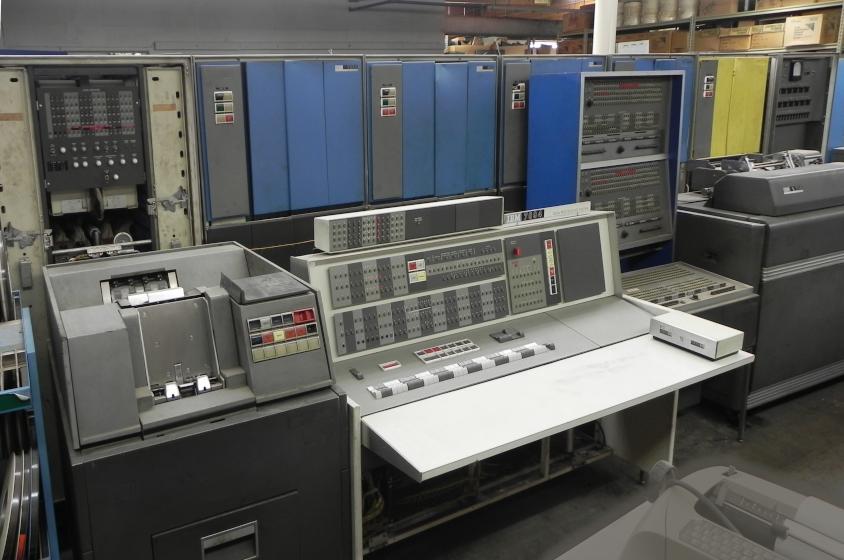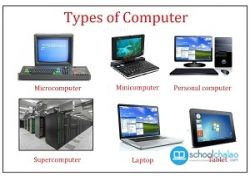Tutorial Library
Learning Point
GENERATION OF COMPUTERS
GENERATION OF COMPUTERS
The first electronic computer was designed and built at the University of Pennsylvania based on vacuum tube technology. Vacuum tubes were used to perform logic operations and to store data. Generations of computers has been divided into five according to the development of technologies used to fabricate the processors, memories and I/O units.
I Generation: 1945 – 55
II Generation: 1955 – 65
III Generation: 1965 – 75
IV Generation: 1975 – 89
V Generation: 1989 to present
First Generation

ENIAC - Electronic Numerical Integrator and Calculator
EDSAC – Electronic Delay Storage Automatic Calculator
EDVAC – Electronic Discrete Variable Automatic Computer
UNIVAC – Universal Automatic Computer IBM 701)
* Vacuum tubes were used – basic arithmetic operations took few milliseconds Bulky.
* Consume more power with limited performance
* High cost
* Uses assembly language to prepare programs. These were translated into machine level language for execution.
* Mercury delay line memories and Electrostatic memories were used
* Fixed point arithmetic was used
* 100 to 1000 fold increase in speed relative to the earlier mechanical and relay based electromechanical technology.
* Punched cards and paper tape were invented to feed programs and data and to get results. Magnetic tape / magnetic drum were used as secondary memory.
* Mainly used for scientific computations.
Second Generation

(Manufacturers – IBM 7030, Digital Data Corporation’s PDP 1/5/8 Honeywell 400)
* Transistors were used in place of vacuum tubes. (Invented at AT&T Bell lab in 1947)
* Small in size
* Lesser power consumption and better performance
Computer Organization
1. Introduction
* Lower cost
* Magnetic ferrite core memories were used as main memory which is arandom - access nonvolatile memory.
* Magnetic tapes and magnetic disks were used as secondary memory.
* Hardware for floating point arithmetic operations was developed.
* Index registers were introduced which increased flexibility of programming.
* High level languages such as FORTRAN, COBOL etc were used - Compilers were developed to translate the high-level program into corresponding assembly language program which was then translated into machine language.
* Separate input-output processors were developed that could operate in parallel with CPU. Punched cards continued during this period also.
* 1000 fold increase in speed.
* Increasingly used in business, industry and commercial organizations for preparation of payroll, inventory control, marketing, production planning, research, scientific & engineering analysis and design etc.
Third Generation
(System 360 Mainframe from IBM, PDP-8 Mini Computer from Digital Equipment Corporation)
* ICs were used
* Small Scale Integration and Medium Scale Integration technology were implemented in CPU, I/O processors etc.
* Smaller & better performance
* Comparatively lesser cost
* Faster processors
* In the beginning magnetic core memories were used. Later they were replaced by semiconductor memories (RAM & ROM)
* Introduced microprogramming
* Microprogramming, parallel processing (pipelining, multiprocessor system etc), multiprogramming, multi-user system (time shared system) etc were introduced.
* Operating system software were introduced (efficient sharing of a computer system by several user programs)
* Cache and virtual memories were introduced (Cache memory makes the main memory appear faster than it really is. Virtual memory makes it appear larger)
* High level languages were standardized by ANSI eg. ANSI FORTRAN, ANSI COBOL etc
* Database management, multi-user application, online systems like closed loop process control, airline reservation, interactive query systems, automatic industrial control etc. emerged during this period.
Fourth Generation
(Intel’s 8088,80286,80386,80486 .., Motorola’s 68000, 68030, 68040, Apple II, CRAY I/2/X/MP etc)
* Microprocessors were introduced as CPU– Complete processors and large section of main memory could be implemented in a single chip
* Tens of thousands of transistors can be placed in a single chip (VLSI design implemented)
* CRT screen, laser & ink jet printers, scanners etc were developed.
* Semiconductor memory chips were used as the main memory.
* Secondary memory was composed of hard disks – Floppy disks & magnetic tapes were used for backup memory
* Parallelism, pipelining cache memory and virtual memory were applied in a better way
* LAN and WANS were developed (where desktop work stations interconnected)
* Introduced C language and Unix OS
* Introduced Graphical User Interface
Computer Organization
1. Introduction
* Less power consumption
* High performance, lower cost and very compact
* Much increase in the speed of operation
Fifth Generation
(IBM notebooks, Pentium PCs-Pentium 1/2/3/4/Dual core/Quad core.. SUN work stations, Origin 2000, PARAM 10000, IBM SP/2)
* Generation number beyond IV, have been used occasionally to describe some current computer system that have a dominant organizational or application driven feature.
* Computers based on artificial intelligence are available.
* Computers use extensive parallel processing, multiple pipelines, multiple processors etc.
* Massive parallel machines and extensively distributed system connected by communication networks fall in this category.
* Introduced ULSI (Ultra Large Scale Integration) technology – Intel’s Pentium 4 microprocessor contains 55 million transistors millions of components on a single IC chip.
* Superscalar processors, Vector processors, SIMD processors, 32 bit micro controllers and embedded processors, Digital Signal Processors (DSP) etc have been developed.
* Memory chips up to 1 GB, hard disk drives up to 180 GB and optical disks up to 27 GB are available (still the capacity is increasing).
* Object oriented language like JAVA suitable for internet programming has been developed. Portable note book computers introduced Storage technology advanced – large main memory and disk storage available.
* Introduced World Wide Web. (and other existing applications like e-mail, e Commerce, Virtual libraries/Classrooms, multimedia applications etc.)
* New operating systems developed – Windows 95/98/XP/…, LINUX, etc. Got hot pluggable features – which enable a failed component to be replaced with a new one without the need to shutdown the system, allowing the uptime of the system to be very high.
* The recent development in the application of internet is the Grid technology which is still in its upcoming stage.
* Quantum mechanism and nanotechnology will radically change the phase of computers.
Very Useful (0)
Useful (0)
Not Useful (0)
Related Search
Please login to your account by completing this form
Reset Your password
Please enter the email address you signed up with and we'll send you a password reset link.
A reset password link has been generated and will be sent to you via email.
You can then follow that link and select a new password.
Completing that action will allow you to reset your password and then you can insert a new one.
Please enter the email address you signed up with and we'll send you a password reset link.
A reset password link has been generated and will be sent to you via email.
You can then follow that link and select a new password.
Completing that action will allow you to reset your password and then you can insert a new one.


